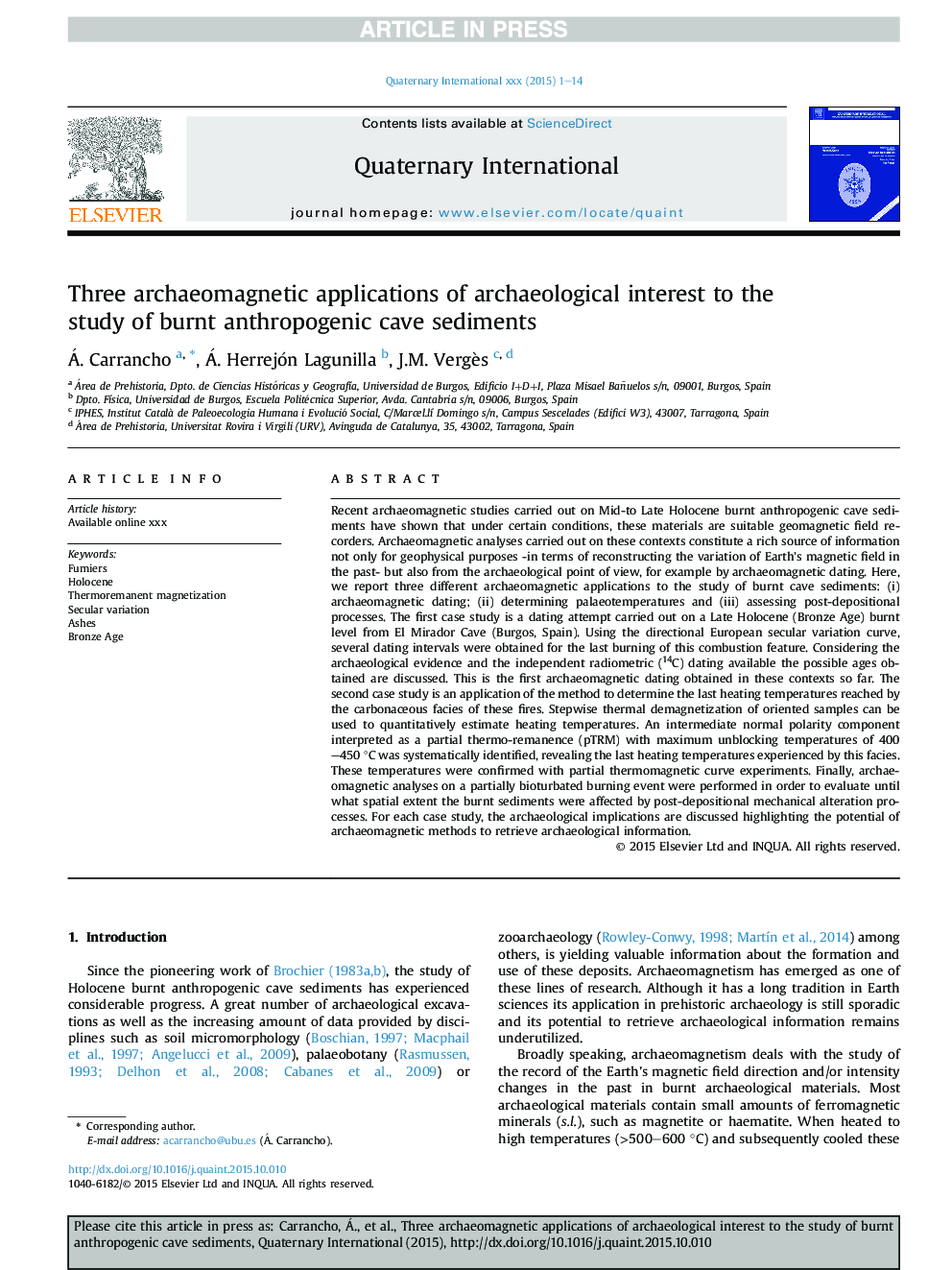| کد مقاله | کد نشریه | سال انتشار | مقاله انگلیسی | نسخه تمام متن |
|---|---|---|---|---|
| 5113776 | 1484093 | 2016 | 14 صفحه PDF | دانلود رایگان |
عنوان انگلیسی مقاله ISI
Three archaeomagnetic applications of archaeological interest to the study of burnt anthropogenic cave sediments
ترجمه فارسی عنوان
سه برنامه کاربردی باستان شناسی باستان شناسی برای مطالعه رسوبات غار آهکی سوزانده شده
دانلود مقاله + سفارش ترجمه
دانلود مقاله ISI انگلیسی
رایگان برای ایرانیان
کلمات کلیدی
موضوعات مرتبط
مهندسی و علوم پایه
علوم زمین و سیارات
زمین شناسی
چکیده انگلیسی
Recent archaeomagnetic studies carried out on Mid-to Late Holocene burnt anthropogenic cave sediments have shown that under certain conditions, these materials are suitable geomagnetic field recorders. Archaeomagnetic analyses carried out on these contexts constitute a rich source of information not only for geophysical purposes -in terms of reconstructing the variation of Earth's magnetic field in the past- but also from the archaeological point of view, for example by archaeomagnetic dating. Here, we report three different archaeomagnetic applications to the study of burnt cave sediments: (i) archaeomagnetic dating; (ii) determining palaeotemperatures and (iii) assessing post-depositional processes. The first case study is a dating attempt carried out on a Late Holocene (Bronze Age) burnt level from El Mirador Cave (Burgos, Spain). Using the directional European secular variation curve, several dating intervals were obtained for the last burning of this combustion feature. Considering the archaeological evidence and the independent radiometric (14C) dating available the possible ages obtained are discussed. This is the first archaeomagnetic dating obtained in these contexts so far. The second case study is an application of the method to determine the last heating temperatures reached by the carbonaceous facies of these fires. Stepwise thermal demagnetization of oriented samples can be used to quantitatively estimate heating temperatures. An intermediate normal polarity component interpreted as a partial thermo-remanence (pTRM) with maximum unblocking temperatures of 400-450 °C was systematically identified, revealing the last heating temperatures experienced by this facies. These temperatures were confirmed with partial thermomagnetic curve experiments. Finally, archaeomagnetic analyses on a partially bioturbated burning event were performed in order to evaluate until what spatial extent the burnt sediments were affected by post-depositional mechanical alteration processes. For each case study, the archaeological implications are discussed highlighting the potential of archaeomagnetic methods to retrieve archaeological information.
ناشر
Database: Elsevier - ScienceDirect (ساینس دایرکت)
Journal: Quaternary International - Volume 414, 1 September 2016, Pages 244-257
Journal: Quaternary International - Volume 414, 1 September 2016, Pages 244-257
نویسندگان
Á. Carrancho, Á. Herrejón Lagunilla, J.M. Vergès,
